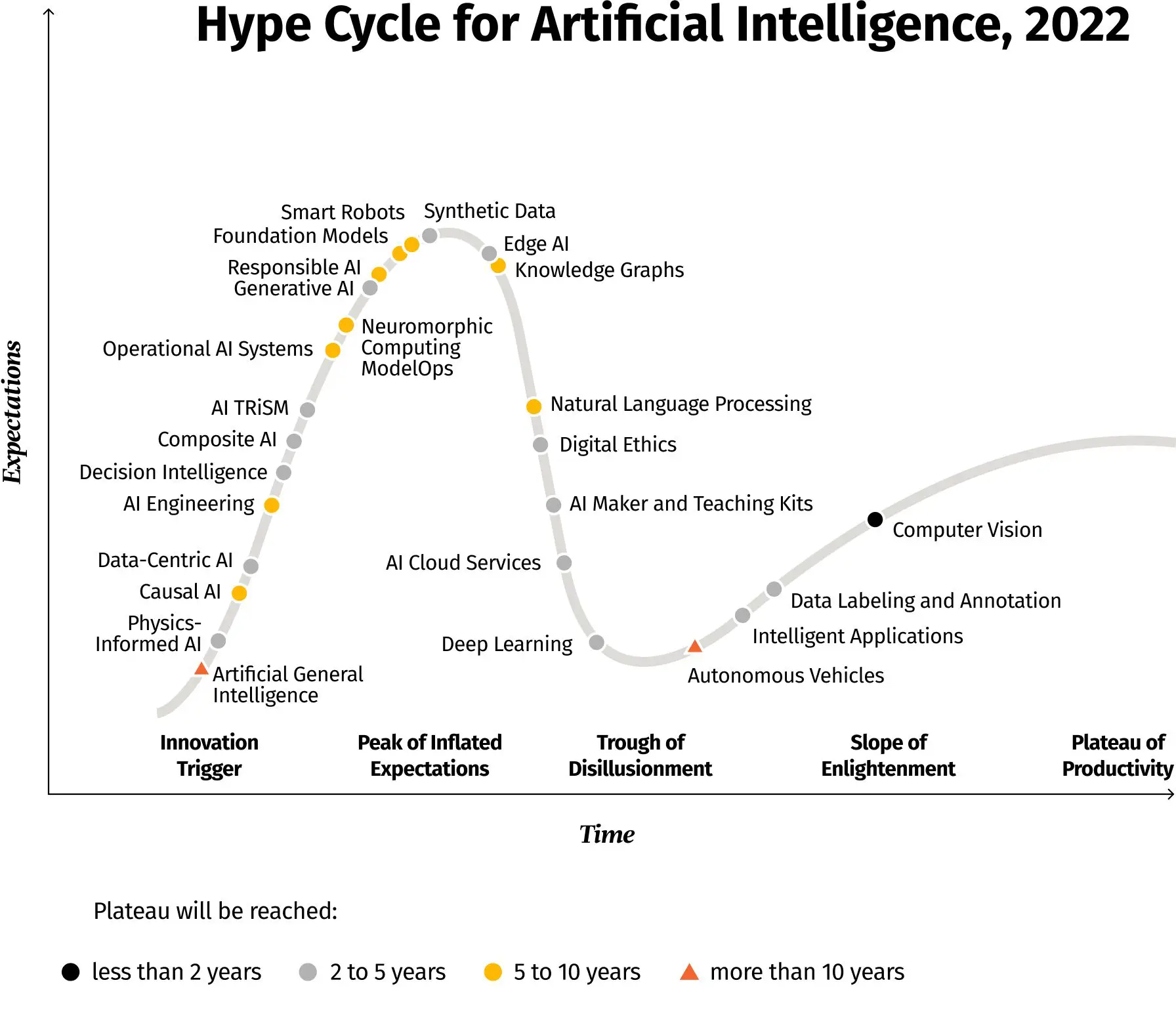With all the recent buzz around ChatGPT, industries are looking for ways to leverage generative AI to gain a competitive edge. After all, generative AI is expected to raise the global GDP by 7% or $7 trillion within a 10-year period.
There is one question on every business executive’s mind today: “How can I apply generative AI to my business?”
However, the first question you should be answering is: “Do I have the necessary technology foundations in place to adopt generative AI?” You can navigate through the hype and make confident investments in practical and valuable solutions for your business only when you’re ready.
Grid Dynamics’ new ebook evaluates the digital ecosystem needed for the successful adoption of generative AI across industries and explores the readiness levels required to implement low to high-complexity applications in healthcare, pharma, manufacturing, financial services, insurance, gaming, and retail.
Generative AI is currently reaching the peak of inflated projections, driven by high expectations, media coverage, and uninformed investments. Without a clear strategy and solid business case, these investments may only yield small gains. It is important to learn from this trend and prepare your organization to leverage generative AI effectively.
 Source: 2022 Gartner Hype Cycle
Source: 2022 Gartner Hype Cycle
Three generative AI technology pillars
To succeed, you need to focus on developing three key foundational pillars that support generative AI’s growth.
Data quality
Ensure that the right data sources are tapped within your organization to avoid unreliable results. Invest in data quality monitoring and management to detect and correct data defects, setting a strong foundation for better model predictions.
Cloud adoption
Leverage the cloud for efficient storage, computing power, and scalability. Migrate from on-premises systems to reduce costs, increase data quality and accessibility, and focus on building value through DataOps and MLOps processes.
Who co-pilots the co-pilots? Why AI needs cloud support
IoT data collection
Consolidate and manage IoT datasets from various connected devices to gain operational intelligence. Break up inflexible monolithic systems to access and visualize data more easily, allowing for experimentation with different AI solutions and enhancing productivity and efficiency.
Exploring the dynamic fusion of AI and the IoT
Industries across the board are striving to establish a solid foundation for leveraging generative AI to enhance various human activities, ultimately boosting productivity and efficiency. While sectors like retail and gaming have made significant progress in this regard, industries such as manufacturing and insurance are still working towards achieving the same level of adoption.
For example, in the manufacturing industry, utilizing shop floor data for generative AI poses a challenge. Many manufacturers lack the necessary insight, visibility, and control over their data ecosystem to effectively train AI models. Establishing a data-first culture and implementing infrastructure for real-time data collection are vital steps in unlocking the true value of shop floor data. Without achieving sufficient data sophistication and addressing errors, caution is required when implementing generative AI use cases. It is essential to ensure the availability of specific datasets, logical frameworks, and appropriate guardrails to maintain accuracy and reliability throughout the manufacturing process.
Are you ready to crawl, walk or run with generative AI?
Depending on how far you get with your generative AI organizational readiness, you will be able to crawl, walk, or run with generative AI as your fuel.
Crawl
Start with a low-risk production-ready use case that focuses on streamlining a specific workflow or process within your organization. Choose a solution that requires minimal resources and has clear parameters to mitigate any reputational risks.
Walk
Expand your horizons and experiment with various tools and applications of generative AI to solve problems innovatively. Encourage early adopters within different teams to test out solutions and gather data on their usage patterns. Collect feedback from employees to understand how the tools impact their jobs and explore innovative ways to use generative AI.
Run
Take your generative AI initiatives to the next level by getting your entire organization on board. Update your company’s vision to include generative AI goals and align them from top to bottom. Work closely with a trusted tech partner to operationalize processes and facilitate training and implementation across teams.
Here is a quick snapshot of crawl, walk, and run applications you could leverage.

Discover the landscape of generative AI readiness across industries and explore various applications that offer increased efficiency, cost reduction, and rapid growth in the Grid Dynamics ebook: From buzzword to business value: An industry framework for generative AI readiness.
Generative AI risks: Data and privacy
As you gear up for generative AI readiness and start exploring its applications for your business, it’s important to be aware of the risks it poses to data and privacy.
Generative AI applications rely on vast amounts of data and generate even more data, which can make your sensitive information vulnerable to issues like bias, poor data quality, unauthorized access, and potential data loss. So, don’t let the promise of innovation blind you to the potential dangers.
As a business executive, it’s your duty to consider these operational risks, ensure data privacy and take steps to mitigate these risks when deploying generative AI.
Embrace or adapt: Assess the pros and cons of customization and off-the-shelf solutions
While most generative AI models can be readily consumed, customization is the logical next step to optimize their performance. Consuming these solutions without customization limits their effectiveness and exposes organizations to potential risks.
Customization involves fine-tuning the models with your own data, resulting in tailored solutions that align perfectly with your specific needs. Although it may require additional time and effort, the benefits are substantial. Customized AI models can significantly enhance accuracy and deliver superior results for your business.
A robust digital ecosystem with strong foundational pillars is essential to support customization in generative AI. We already know that it provides access to the right data sources, ensuring organizational readiness to experiment with different AI applications and scale capabilities as required. And this level of control over your data is vital for protecting against perceived risks and safeguarding sensitive information. By establishing a solid digital infrastructure, businesses can effectively harness the power of customization in generative AI, unlocking its full potential and shielding your organization from being exposed to any perceived risks.
- SEO Powered Content & PR Distribution. Get Amplified Today.
- PlatoAiStream. Web3 Data Intelligence. Knowledge Amplified. Access Here.
- Minting the Future w Adryenn Ashley. Access Here.
- Buy and Sell Shares in PRE-IPO Companies with PREIPO®. Access Here.
- Source: https://dataconomy.com/2023/05/26/navigating-the-path-to-generative-ai-success-across-industries-a-grid-dynamics-crawl-walk-run-strategy/



